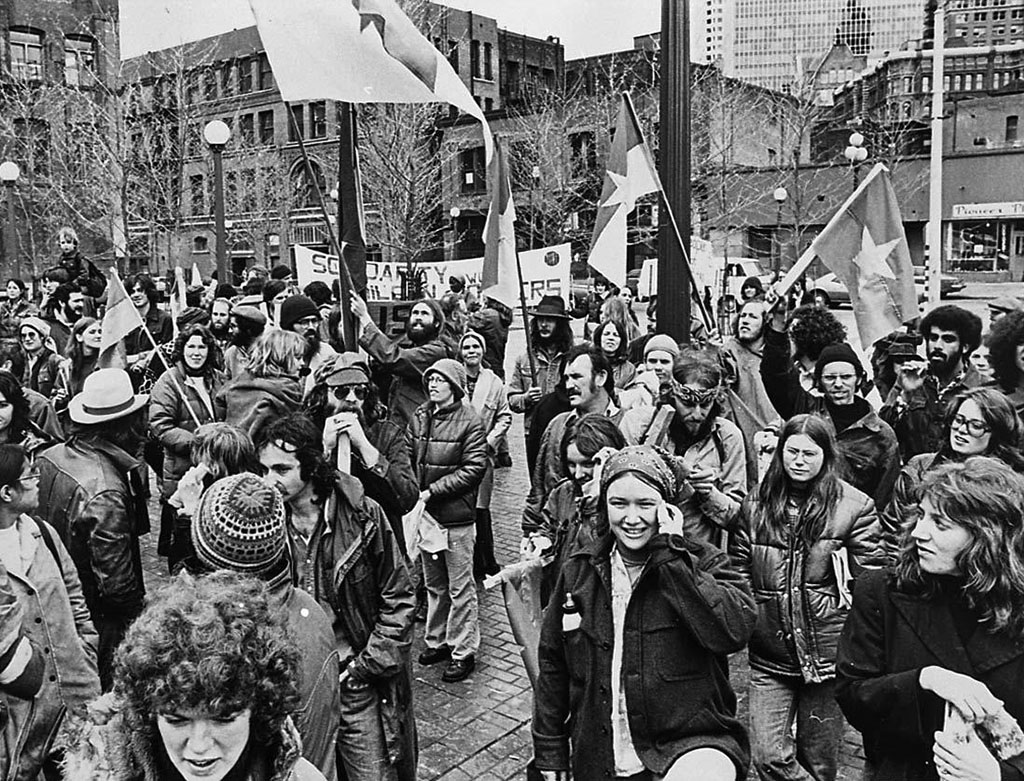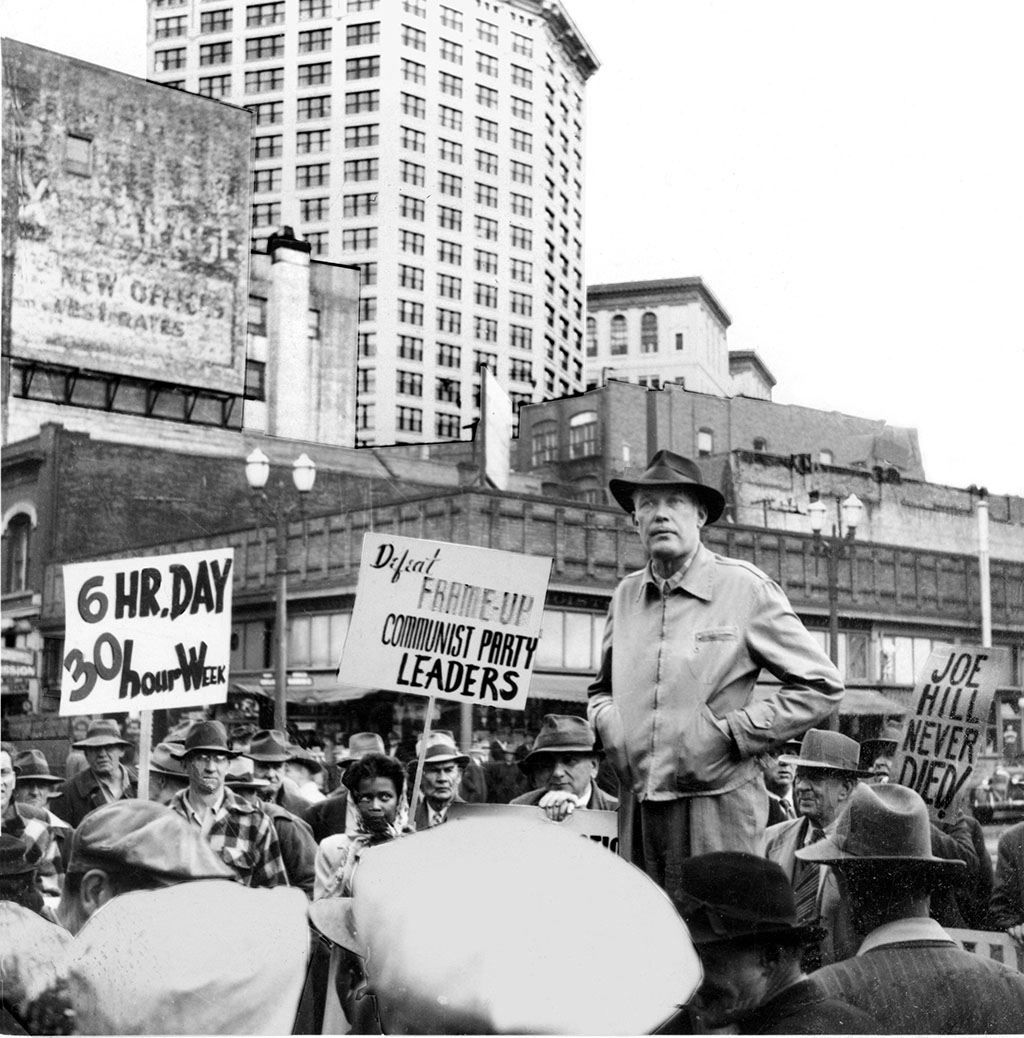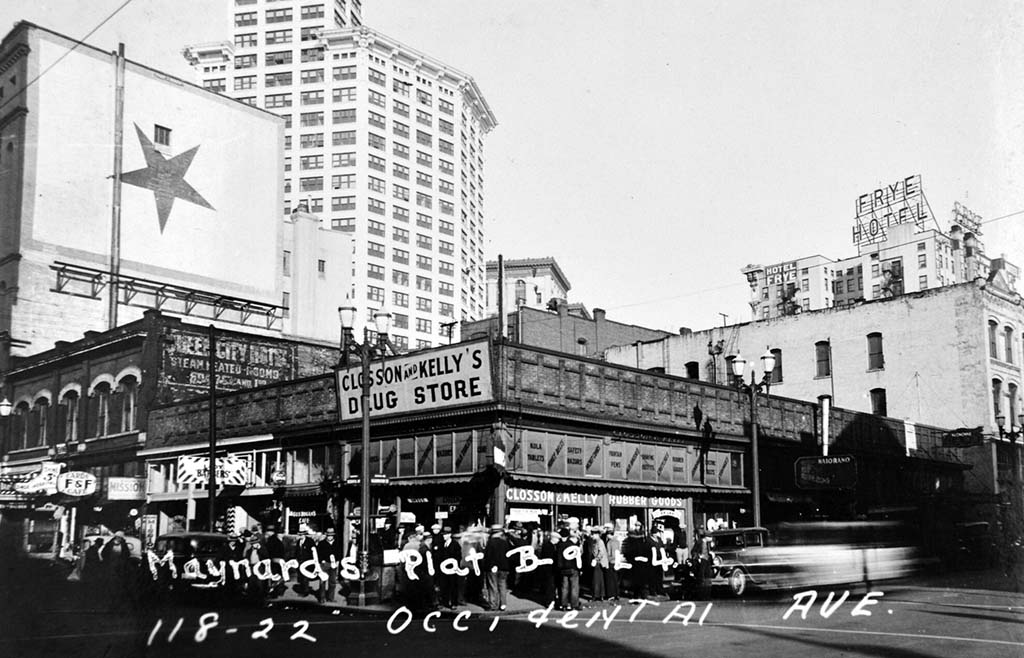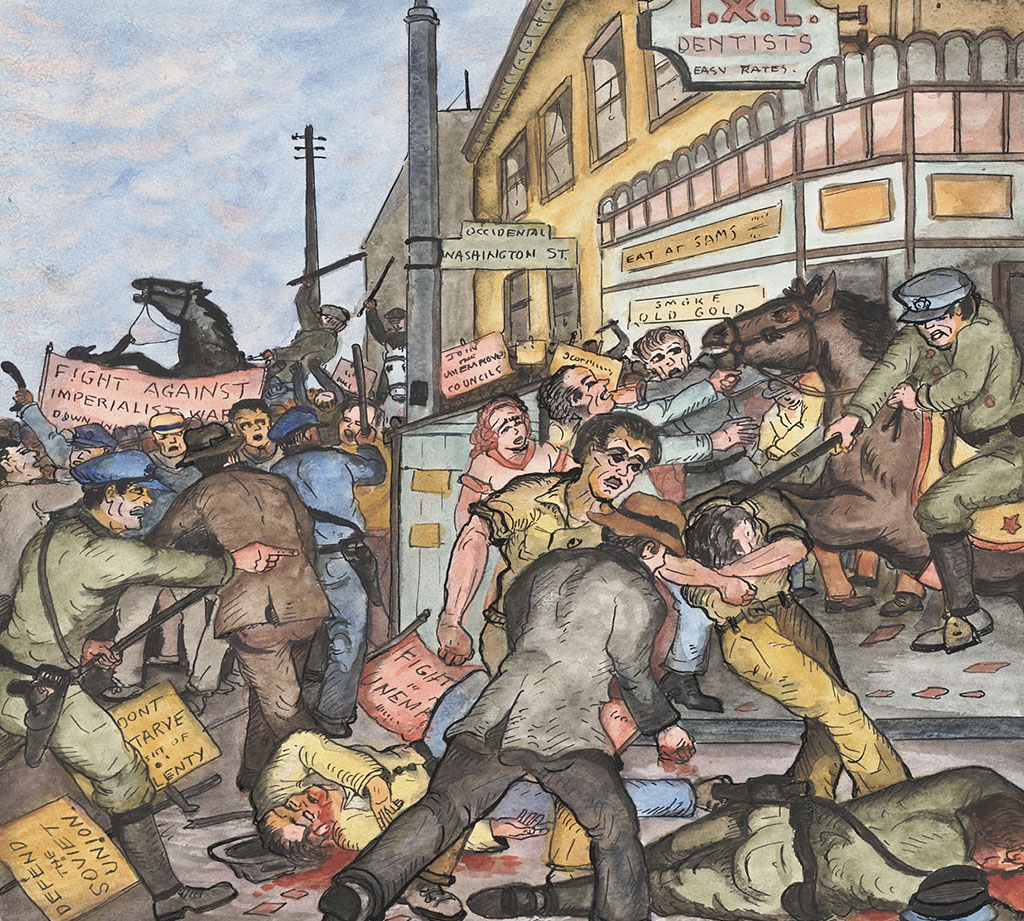Former Location of Free Speech Corner
S Washington Street and Occidental Avenue S
Tour: Pioneer Square
-
Former location of Free Speech Corner
S Washington Street and Occidental Avenue S
S Washington Street and Occidental Avenue S
During the first decades of the 1900s, the corner of Occidental and Washington was ground central for radicalism in Seattle. The so-called Free Speech Corner attracted radicals, workers rights organizations, the Industrial Workers of the World, the Socialist Party, and others. No speaker was more popular than Kate Sadler. Born in Scotland, she arrived in Seattle around 1909 and quickly became “Seattle’s best-beloved radical orator,” wrote labor journalist Harvey O’Connor, in his memoir. She was well-organized, outspoken, fiery, and tough, once stopping a thief by stabbing him with her hatpin. And, in a time when some in the worker’s rights movements were racist xenophobes, Sadler was strongly anti-exclusion. Her strongest language and passion though was for workers. According to a young socialist of the time, wrote O’Connor, “When workers called for help, in strikes, jailings, free speech struggles, Kate came. Kate, the fearless one, the Joan of Arc.”
Over the years, she was arrested many times, once during a speech in Seattle about World War I when she supposedly called President Woodrow Wilson a traitor. But the police had no luck in taking her in because the crowd chased down them down and freed Sadler. In the final years of her life she lived with her husband at the anarchist Utopian community of Home, near Tacoma. She died in 1939.
Walk east on S Washington Street one block to Second Avenue S, turn left, and walk north around the corner. Continue 50 yards or so on Second Avenue Extension S, to a doorway adjacent to an arched entryway.






